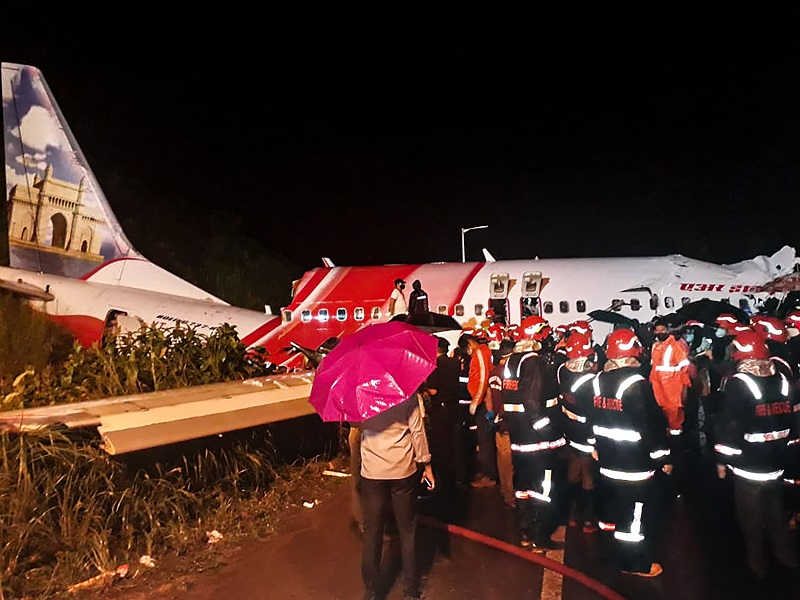Chennai: A deadly combination of a slippery runway, strong tailwind, bad weather conditions, and landing ahead of the threshold spot could have resulted in the skidding of the ill-fated Air India Express in Kozhikode that claimed 18 lives, two aviation experts said Saturday.
As for the “failure of the aircraft’s landing gear” and consequently a possible belly-landing by the pilot, one of the experts pointed out that in such a scenario the pilot had the option to go for any nearby airport.
“Even if he had decided to belly-land on the table-top Kozhikode airport, the runway is of sufficient length — over 9,300 feet — which is enough for the plane to come to a stop than overshoot the runway and fall into a valley below,” he reasoned.
An Air India Express aircraft flying in from Dubai skidded off the runway while landing in Kozhikode on Friday evening and plunged into the valley. Two pilots were among the dead.
The aircraft carrying 190 persons, including six crew members, battled heavy rain while landing at 7.41 pm on Friday, and careered off the runway after landing at the table-top runway.
“It may be due to lack of friction between the tyres and the runway. There may be the factor of hydroplaning due to waterlogging,” a pilot told IANS, requesting anonymity.
Hydroplaning is a condition in which presence of water causes a moving wheel to lose contact with the load-bearing surface, the runway in this case. This makes braking or manoeuvring of the vehicle (plane), impossible. Hence, the aircraft’s speed could not be reduced after landing, the pilot said.
Excessive rubber deposits — aircraft tyre scraps — could also be a contributory factor for a plane to skid during touchdowns during rain or waterlogging.
Speaking to IANS, a former Indian Air Force (IAF) navigator pointed out that the standard 9,000-feet Kozhikode runway is not an issue for this kind of aircraft.
“Probably, the pilot landed ahead of the threshold or the usual spot, owing to bad visibility, strong tailwind, and a slippery runway — all odds were stacked against him,” the former navigator said.
“With a reduction in distance available to bring the plane to a halt, the pilot would have to literally sit on the brakes with full reverse engine power. The valley at the end of the runway must have been on his mind. The slippery runway seems to have done the rest,” he added.
“The runway is of sufficient length for such a plane to come to a halt even in emergency circumstances like landing gear failure and consequent belly-landing…. The pilot could even have chosen to land at any nearby airport than at Kozhikode. As per the initial statements issued by Air India Express, the pilot first tried to land on one runway and opted for another after facing difficulty.”
“The landing gear could have broken on or after touchdown. The cockpit voice recorder and the flight data recorder from the black box will reveal the actual details,” the expert remarked.
According to him, it was “bad luck” and perhaps “error of judgement” on part of the pilot that led to the tragedy.
IANS
